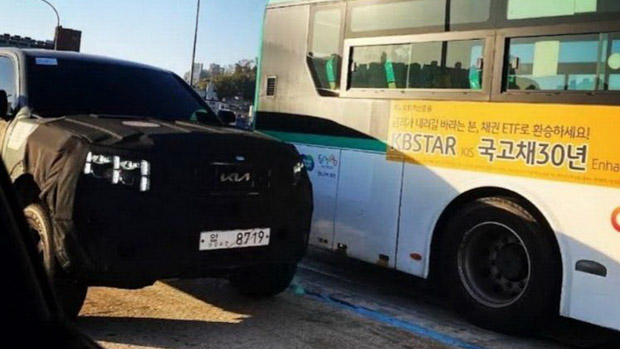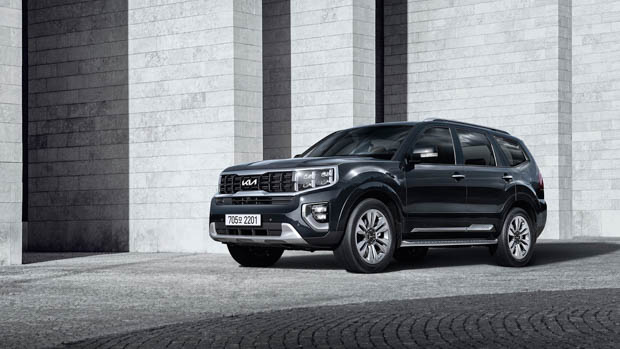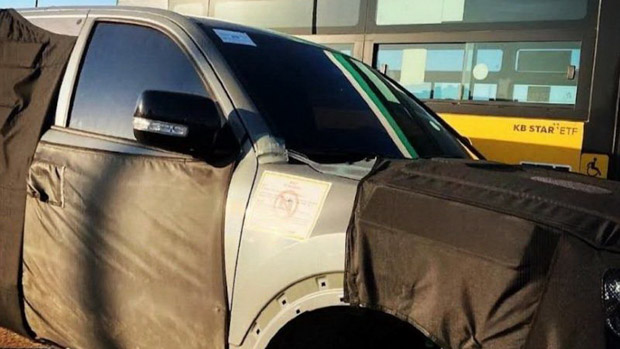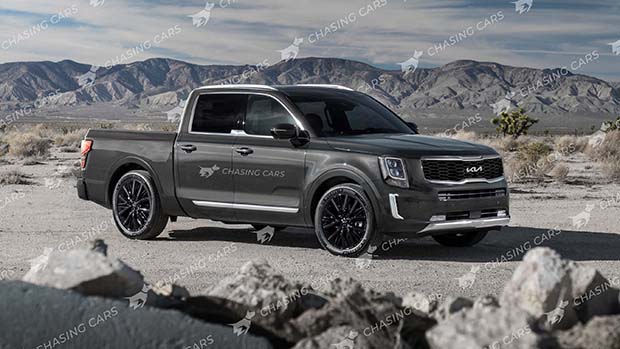-
Car Reviews
- All reviews
- Midsize SUVs
- Small cars
- Utes
- Small SUVs
- Large SUVs
- Large cars
- Sports SUVs
- Sports cars
- Vans
Latest reviews
- Car News
-
Car Comparisons
Latest comparisons
- Chasing Deals
The Korean brand has spoken about releasing either a diesel or a battery-powered pick-up truck in the past. Is this it?
After a relative period of silence, it appears that South Korean manufacturer Kia is pushing ahead with development of a dual-cab ute, with spy pictures of a Kia pick-up prototype emerging this week.
These images of the vehicle testing in public were originally published on the Clien forum, and and have surfaced around a year after the brand’s local arm once again confirmed interest in a ute for the Australia market.
“The good thing is that if it (the ute) does occur, I think that we’ll have a lot of ownership of it because obviously we are a big market,” Damien Meredith, Kia Australia’s chief operating officer, told Chasing Cars in October of 2021.
It has been an open secret for the best part of a decade that Hyundai and Kia – which are both brands of Hyundai Motor Company (HMC) – have been studying the introduction of a rugged dual-cab ute for the Australian market.
Speaking to Kia Australia’s General Manager of Product Planning, Roland Rivero, Chasing Cars understands that a ute is still very much in the wishlist of the brand’s local arm.
“We see a massive opportunity in our market for one. And if we were going to bring one to market, we would want it to be a proper ladder frame, proper capable pickup truck that could take on the likes of Ranger, Hilux, and D-Max,” Rivero said.
If the project achieves sign-off, the Kia or Hyundai ute product would compete with key rivals such as the Ford Ranger, Volkswagen Amarok, Toyota Hilux and Nissan Navara.
The most recent photos of the Kia prototype ute show it wearing a front fascia that’s similar to the Mohave large SUV, a ladder-frame chassis 4WD that Kia sells in Korea, China, and in the past, North America.
At the rear, things are very covered up, but it’s clear that it’s a ute with a rear differential and a tailpipe. It also gets slim tail-lights at either side, hinting at a drop down tailgate in the middle.
In theory, using the Mojave as a base for Kia’s first dual-cab ute would make sense given that it’s a rival for the Toyota Land Cruiser Prado. The Mojave is powered by a 3.0-litre turbo diesel V6 engine that makes 184kW and 539Nm.
However, prototype versions of Kia and Hyundai’s ute have worn Mojave front ends for at least five years in testing. It’s also likely that this upcoming ute will be sitting on a new chassis entirely.
The latest intel suggests that the brands have now shifted their focus from developing a diesel ute, towards releasing an all-electric dual-cab that would be a match for the Rivian R1T, LDV e-T60, and the predicted Ford Ranger Lightning.
If the decision is made to make the Kia or Hyundai ute electric, it is likely the vehicle would sit on a heavily revised version of HMC’s e-GMP EV chassis with extensive off-roading capability.
It is still possible that the brands would make the decision to pursue combustion. Kia already has a longitudinal architecture in place with the Stinger sports sedan, while HMC’s luxury brand Genesis has a newly-developed inline six-cylinder diesel engine available for use.
Earlier this year, it was confirmed at the Kia Investor Day that two electric pick-up trucks would be launched by the brand among the 14 new BEVs it was planning on unveiling by 2027.
One of these Kia EV utes was said to be a “dedicated pick-up”, while the other a “strategic model for emerging markets.”
We can imagine that the former would be aimed at Australia.
If Kia does manage to launch an all-electric ute in Australia, it’s likely that it’d be the first of its kind on local soil.
Ford has expressed interest in a hybrid Ranger, and Toyota has done the same for the Hilux, but neither of these would run solely on battery power.
There’s also the big American players in the Ford F-150 Lightning, the Chevrolet Silverado EV, and the Rivian R1T, but there doesn’t seem to be a hurry on getting these down under.
Latest news
About Chasing cars
Chasing Cars reviews are 100% independent.
Because we are powered by Budget Direct Insurance, we don’t receive advertising or sales revenue from car manufacturers.
We’re truly independent – giving you Australia’s best car reviews.



